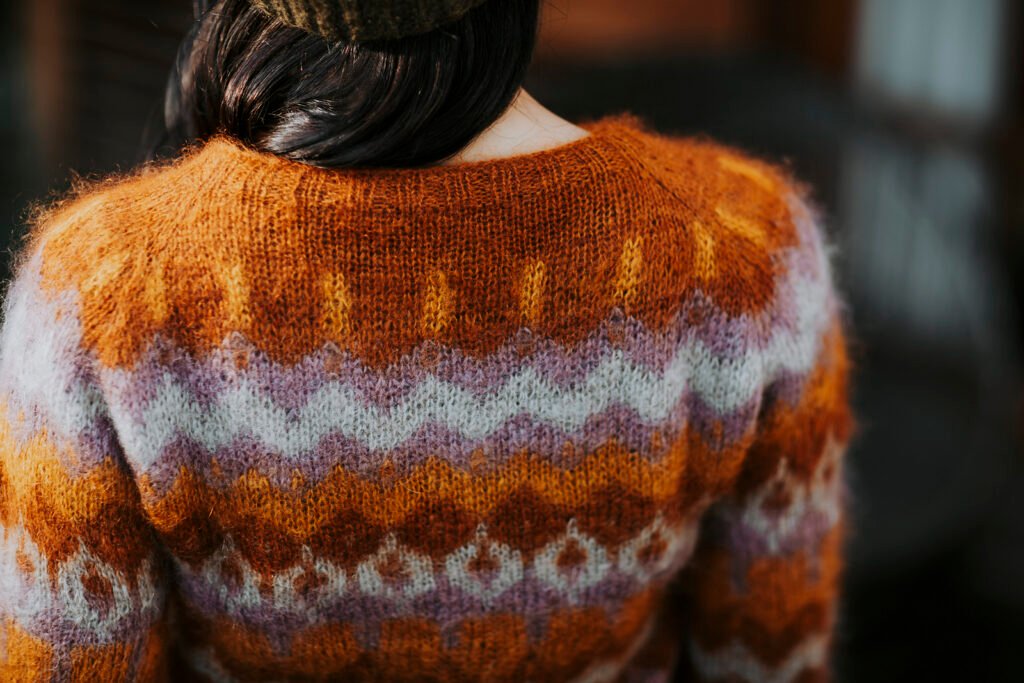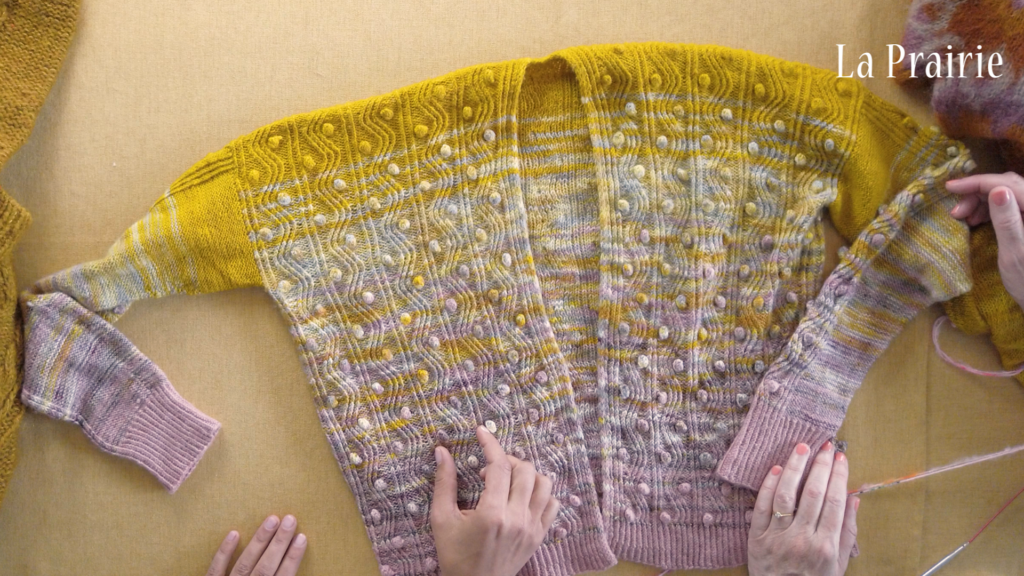Our feature interview in Episode 146 is with the Argentinian knitwear designer Joji Locatelli. Joji is very well-known in the online knitting community. She has well over 300 published designs and has been invited worldwide to teach workshops and be a guest speaker at different fiber events. We interviewed Joji while she taught at a mYak retreat in the Dolomites, Italy. On our way down there, we stopped in the Austrian city Innsbruck to film a short travel vlog for you, which is also included in this episode. On top of that, Madeleine and I have updates on our knitting projects in Under Construction!
Joji Locatelli
We start our interview by talking about Argentina’s knitting culture in the late 1980s. As a child, Joji would join her mother when visiting the local yarn shop. At the time, it only sold yarns by weight, giving no further information such as fibre content or thickness. So, Joji quickly learned that knitting always began with a swatch. If she wanted her mother to knit her a sweater, Joji would first have to measure herself and her mother’s gauge swatch and then do the calculations to determine the correct stitch count. So, even before she could knit, Joji was helping to design her own sweaters!
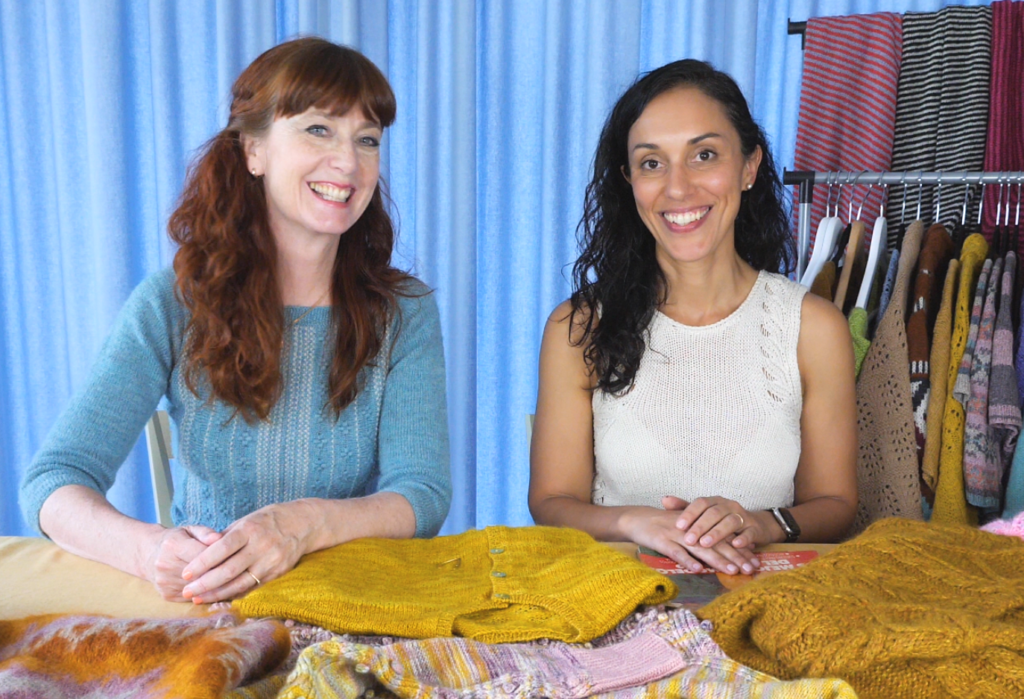
Joji also demonstrates how the stitch pattern of a design can limit the number of possible sizes. The wider a stitch pattern, the more difficult it is to grade for the “in-between” sizes. The width of a stitch pattern depends not only on the number of stitches but also on the yarn.
Therefore, designs using a fingering weight yarn can be much easier to grade (and more forgiving if you messed up your gauge swatch) than designs using a heavier yarn. When Joji works with a larger pattern repeat, she tries to compensate for the limited grading by making the garment’s shape suitable to wear both fitted and slightly oversized.
Joji also discusses the importance of row gauge for raglan and circular yokes, and she uses the design she is still working on as an example. For these types of constructions, designers usually have a fixed number of rows for the yoke due to the way the increases are placed (when it’s top-down or decreases when it’s bottom up).
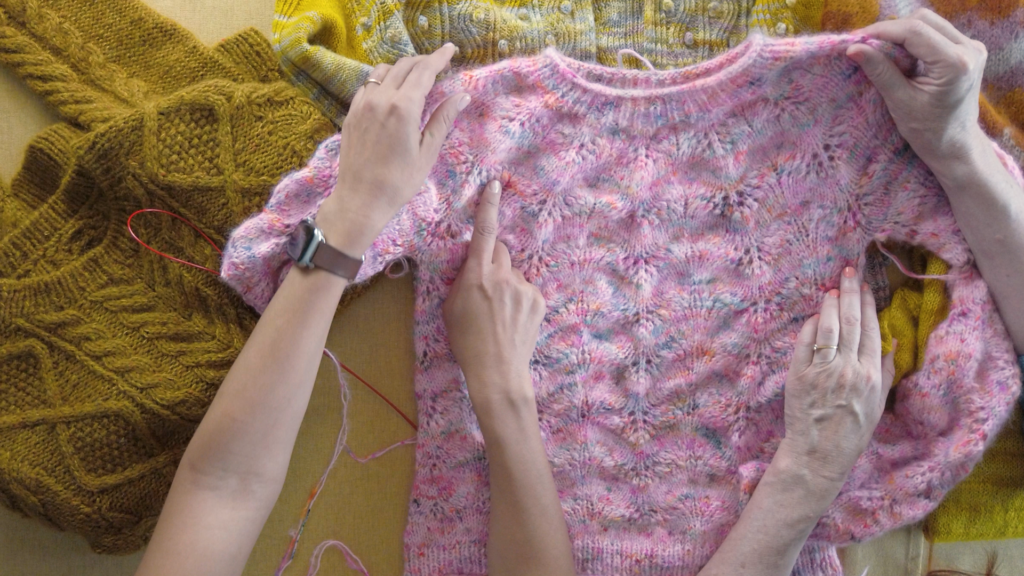
Finding Joji Locatelli
- Website: www.jojiknits.com
- Ravelry: Joji Locatelli
- Instagram: @jojilocat
Patron Discount - Joji Locatelli
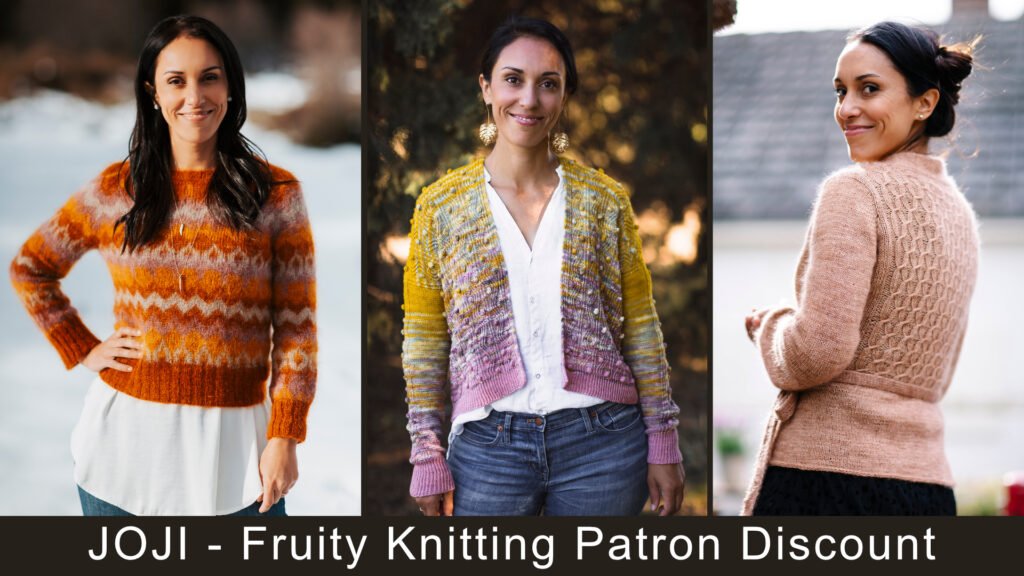
Joji Locatelli is generously offering Fruity Knitting Patrons a 25% discount off all her self-published patterns in her Ravelry store and on her website. Thank you very much to Joji! Fruity Knitting Patrons can find all discount details here.
Under Construction
Instant Crush by Joji Locatelli
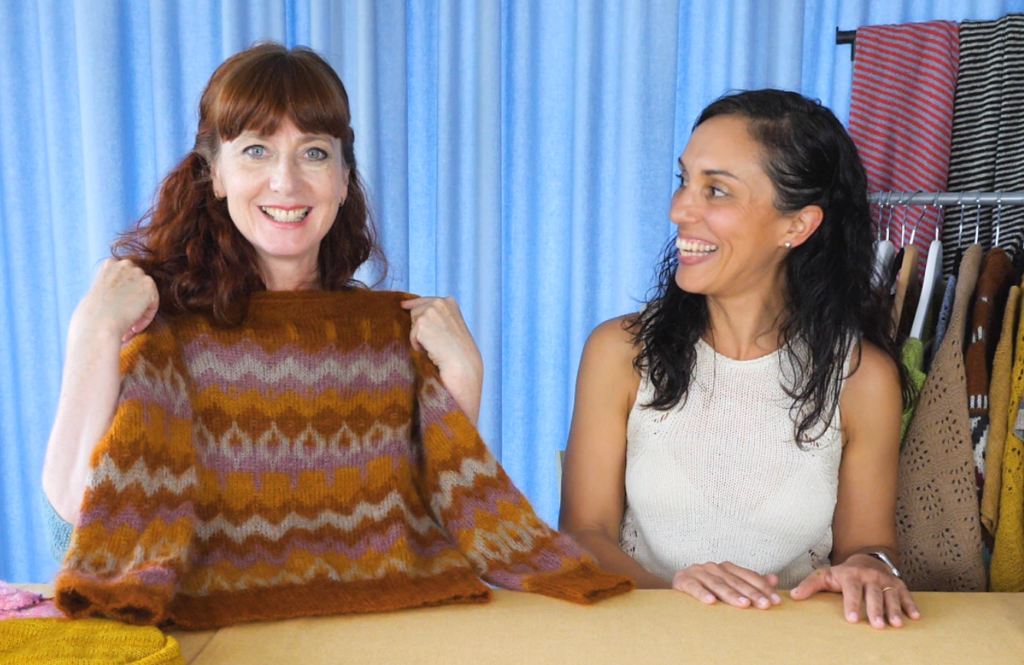
It’s knitted without seams and top down, using 2 strands of silk/mohair yarn held together in 4 colours. I haven’t done colourwork for a while, so it was time to do another project using that technique and I’ve never actually worked with two strands of mohair held together. Because it’s knitted on a 4 mm needle this is a very fast knit! The recommended yarn is Feather from Magpie Fibers, a blend of 70% mohair and 30% silk.
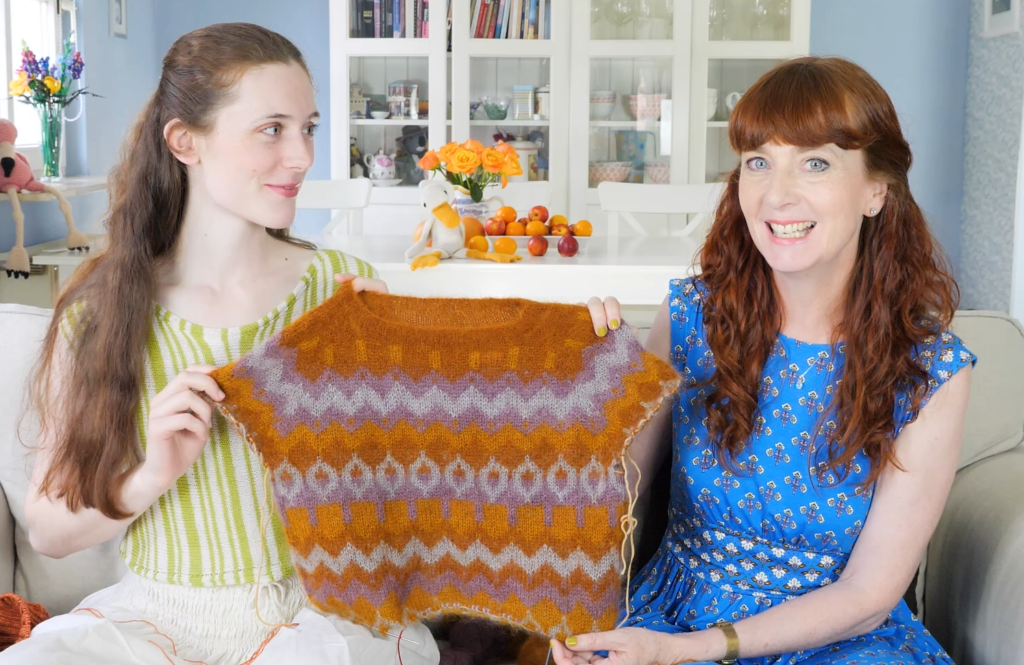
Joji used this design to demonstrate the importance of understanding the characteristics of fiber blends. For instance, this yarn has a high percentage of silk, which will stretch more than wool. Consequently, she has put in slightly fewer rows in the yoke than if she were using a pure wool fiber. If you were to use a substitute yarn, it’s a good idea to choose one that behaves similarly; otherwise, you would need to alter the pattern to include a few more rows in the yoke.
Patron Discount - Magpie Fibers
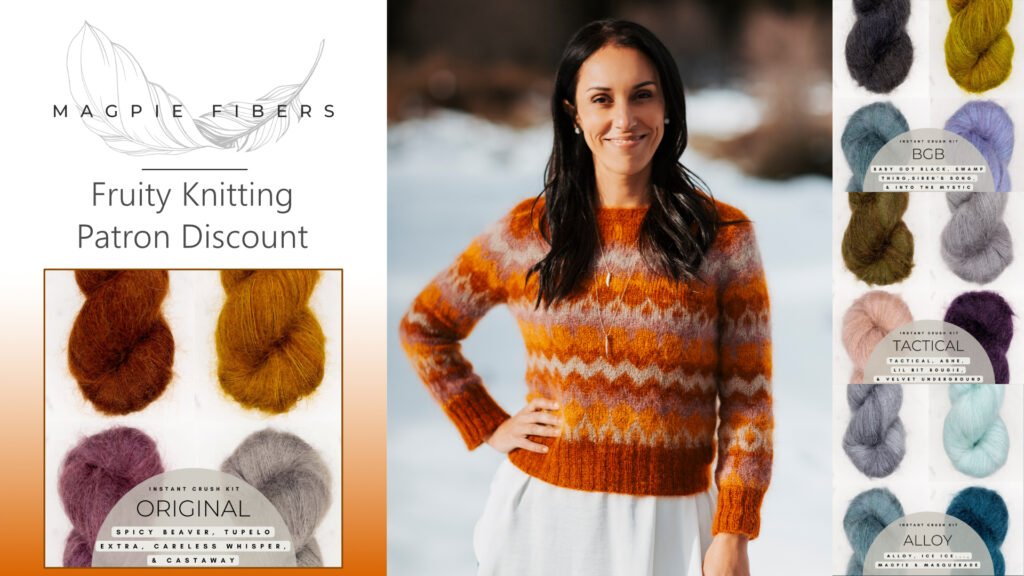
Magpie Fibers are kindly offering Fruity Knitting Patrons a 10% discount off their Joji Locatelli Instant Crust Yarn Kits in their online store! Thank you very much to Magpie Fibers for this great discount! Fruity Knitting Patrons can find all details here.
Support the Show
It takes a lot of hours and effort to create a program like this. And so, if you enjoy watching our show, we would really appreciate it if you joined our Fruity Knitting patron community by making a small, monthly contribution starting at 5 USD a month. To support Fruity Knitting, just go to patreon.com/fruityknitting where you can become a Hebridean, Merino or Shetland patron.
Under Construction
May Top by Asita Krebs
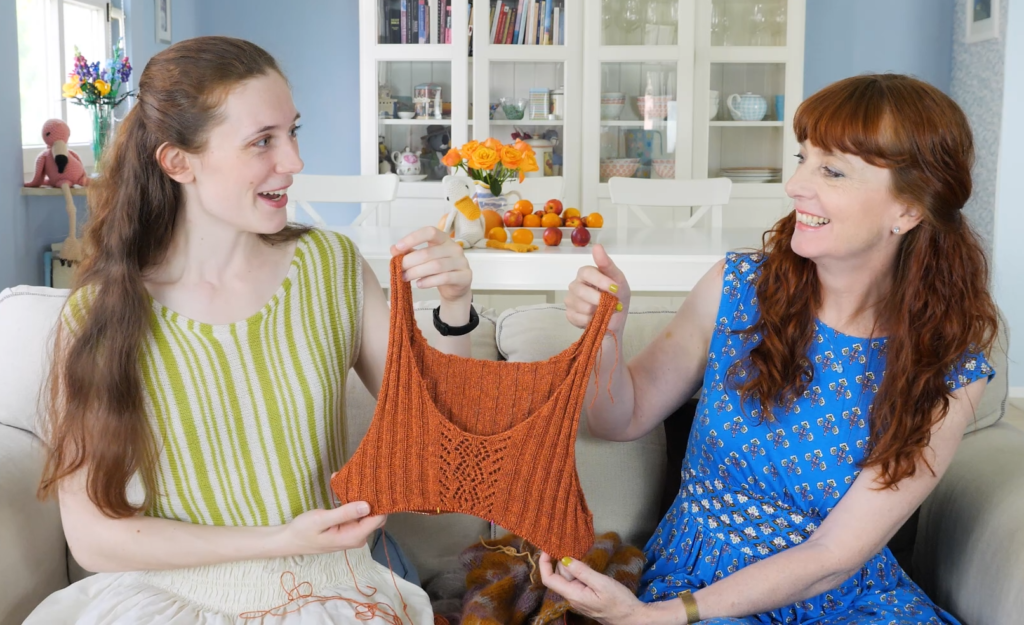
Madeleine has progressed on her May Top by Asita Krebs. It’s a fast knit, but in her usual fashion, she has already made mistakes and had to rip back a few times =’) The May top is an all-over ribbed tank top knitted top down in one piece, with an elegant lace panel running down the front.
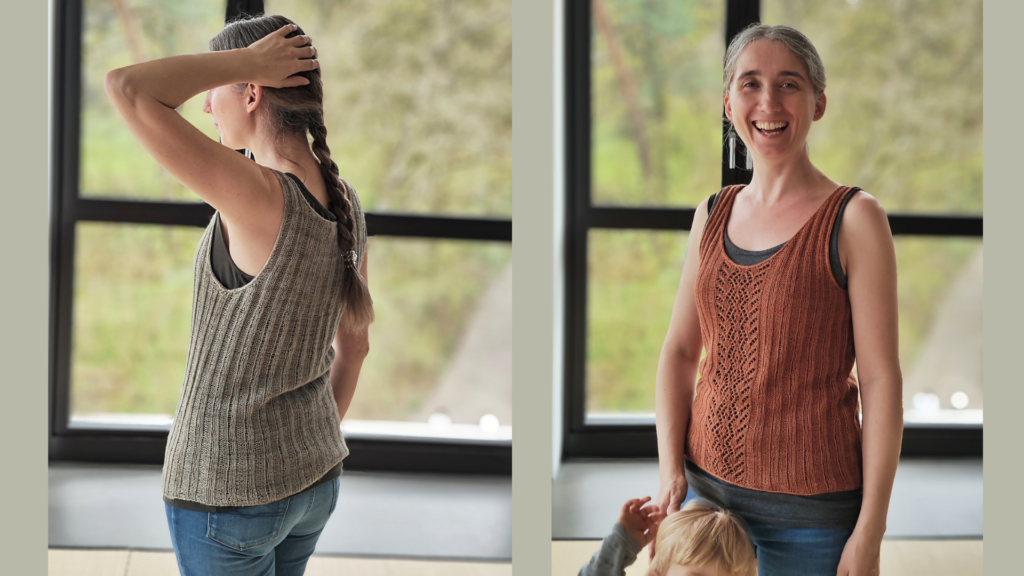
Madeleine’s gauge is tighter than recommended at 24 stitches by 38 rows instead of 22 stitches by 34 rows. So, she’s knitting the third size to achieve the width of the second size. She also has to add extra rows or else the top will be too short. This is easy once the front and back pieces are joined and you knit the body in the round. But adding rows around the armhole section with all the shaping is more challenging.
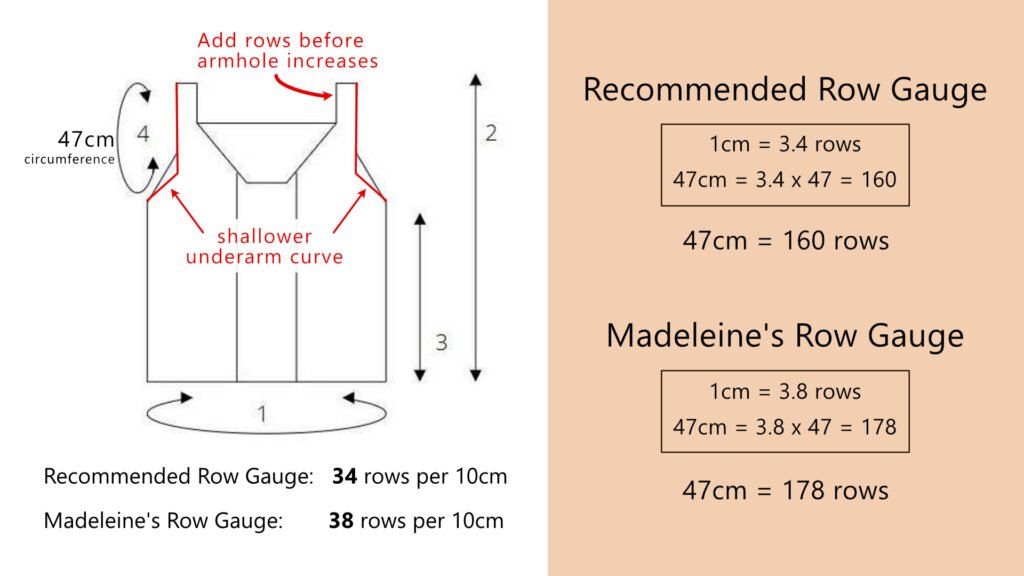
The pattern’s schematic shows the full measurement of the armhole as number 4. Madeleine’s armhole circumference needs to be 47 cm. With the recommended row gauge, 47 cm equals 160 rows (47 x 3.4), which means 80 rows for the front and 80 for the back. With Madeleine’s gauge of 38 rows per 10 cm. So, she needs 178 rows (47 x 3.8) to achieve a 47cm armhole circumference. She added these 18 extra rows to the straps before starting the increases.
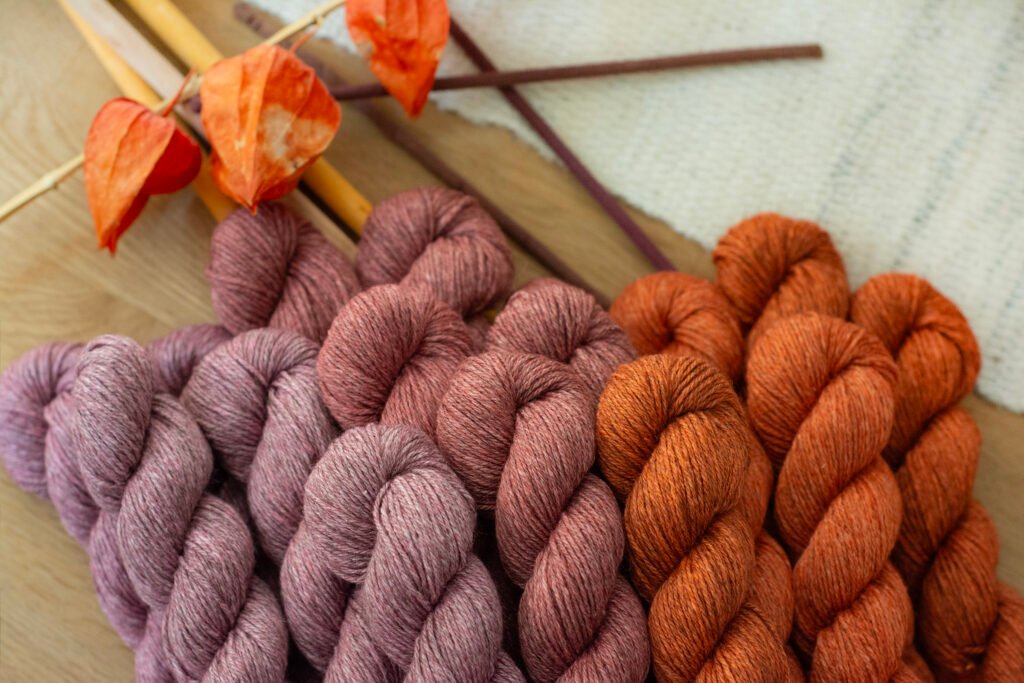
Madeleine is using mYak’s Baby-Yak-Silk blend in the warm, rusty orange called Dakini. Dakini is Sanskrit for “sky dancer” and in Tibetan Buddhism, a Dakini guides humans to the pure truth, sometimes in rather forceful and painful ways. Thus, they are often depicted as wrathful (scary looking) beings. It’s hard to find a clear answer to what a Dakini is, however, as different religions have their own stories and interpretations.
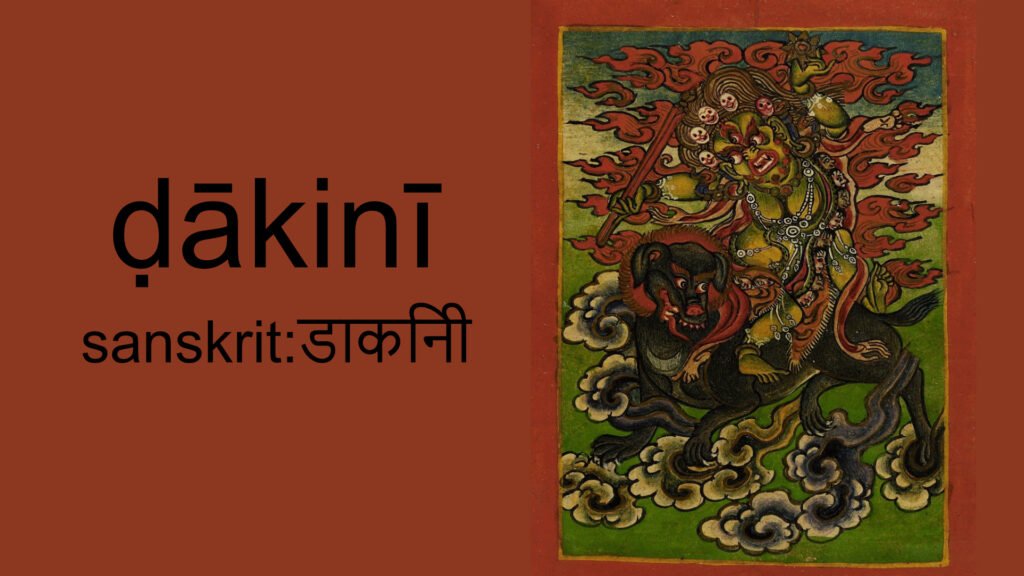
Innsbruck, Austria - Travel Vlog
On our way down to the Dolomites where we filmed Joji’s interview, we stopped in the Austrian city Innsbruck. It’s surrounded by stunning mountains and also has a rich cultural history. So, we just had to film a travel for you!
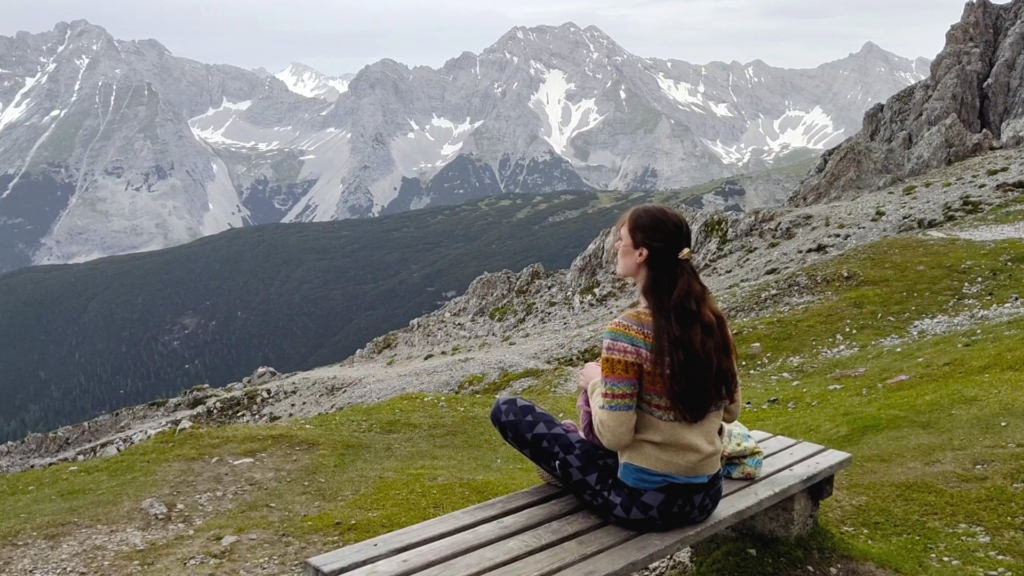
We visit the “Top of Innsbruck,” also known as the Hafelekarspitze which offers an amazing view over the entire city. You can hike, or take one train and two cable carts to reach the top.
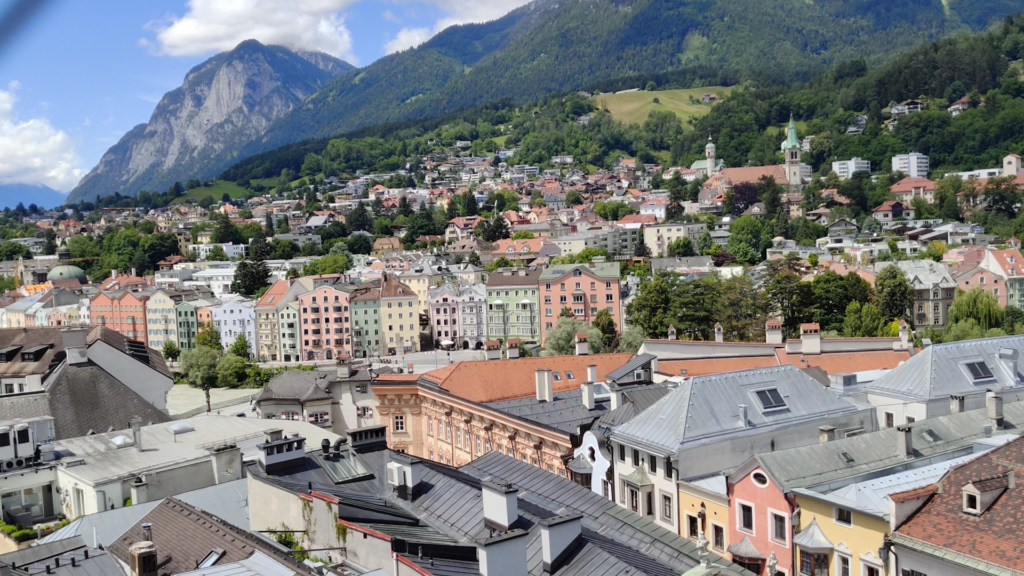
Innsbruck is filled with gorgeous architecture from various time periods, including medieval, gothic, renaissance and baroque architecture. Many of the places we visit are connected with Maximilian I, “the last knight” and Holy Roman Emperor in the late 15th and early 16th century.
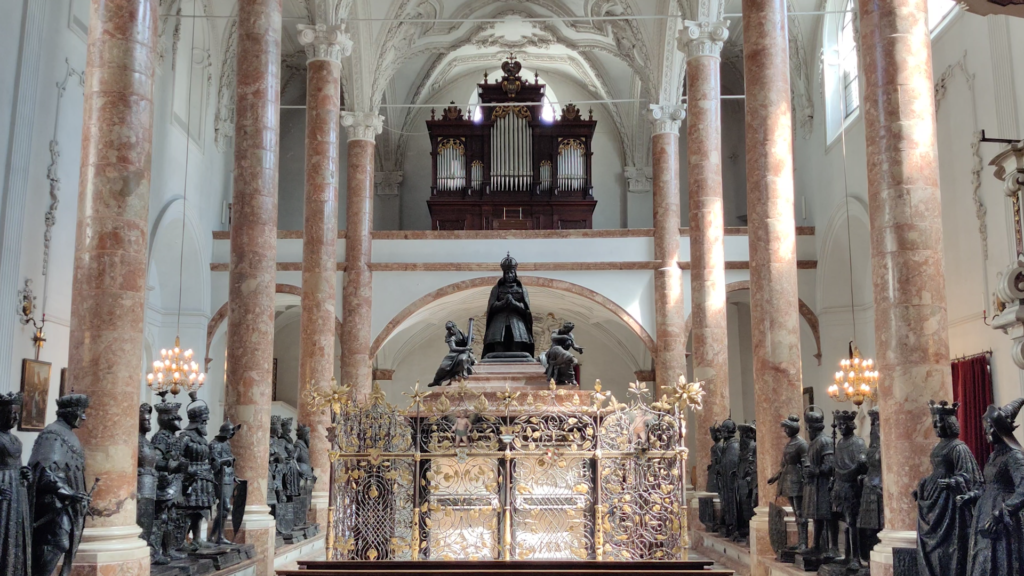
The court church holds his magnificent tomb. It is surrounded by 28 larger-than-life bronze statues, representing the Emperor’s relatives, ancestors and role models. The emperor himself is depicted kneeling in a state of worship before the altar.
What we are wearing
Madeleine is wearing her Cinna Top by Ksenia Naidyon on the couch. Andrea is wearing her Maeron by Moonstruck Knits during the interview.
Credits
- J. S. Bach, The Well Tempered Klavier, Prelude No. 3 in C-Sharp major, BWV 848, performed by Kimiko Ishizaka, Creative Commons Attribution 3.0
- Franzl Lang, Auf und auf voll Lebenslust, from the album Auf und auf voll Lebenslust ℗ 1987 Franzl Lang, released on 1.1.1987
- Franzl Lang, Wer die Berge liebt, from the album “Wenn ich verliebt bin, muß ich jodeln – 50 große Erfolge,” released on 23.06.2016, ℗ Musictales
- Lisa Stoll, am Wildsberg, from the album “Gipfelstürmer,” released on 16.08.2018,
℗ 2018 CB Music - Lisa Stoll, Stärnschnuppe, from the album “Gipfelstürmer,” released on 16.08.2018, ℗ 2018 CB Music
- Phillip Glass, Études: No. 18, from the album “Piano Works,” played by Víkingur Ólafsson, ℗ 2017 Deutsche Grammophon GmbH, Berlin
- Dakini on a Gray Dog, Nyingmapa Buddhist or Bon Ritual Card, Watercolor drawing from Tibet, 18th – 19th century, Los Angeles County Museum of Art, Public domain, via Wikimedia Commons
- Tibetan Dakini, Georges Labit Museum, Public domain, via Wikimedia Commons
- Maximilian I and Maria of Burgundy, Anton Petter, Public domain, via Wikimedia Commons
- Maximilian I as Saint George, Workshop of Lucas Cranach the Elder, Public domain, via Wikimedia Commons
- Ahnensaal, Porträt Maximilian I, Doronenko, Creative Commons Attribution-Share Alike 3.0 Austria, via Wikimedia Commons

